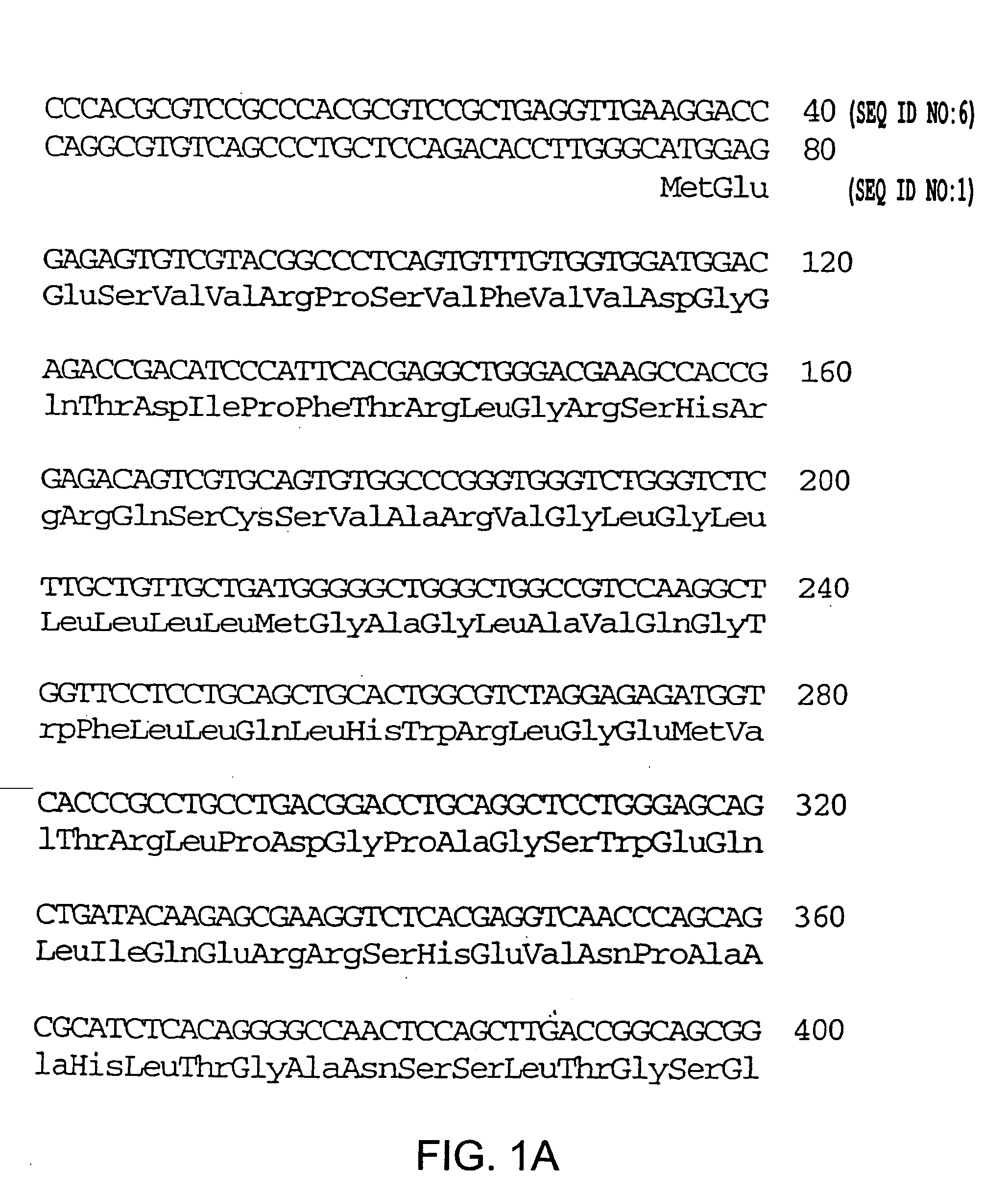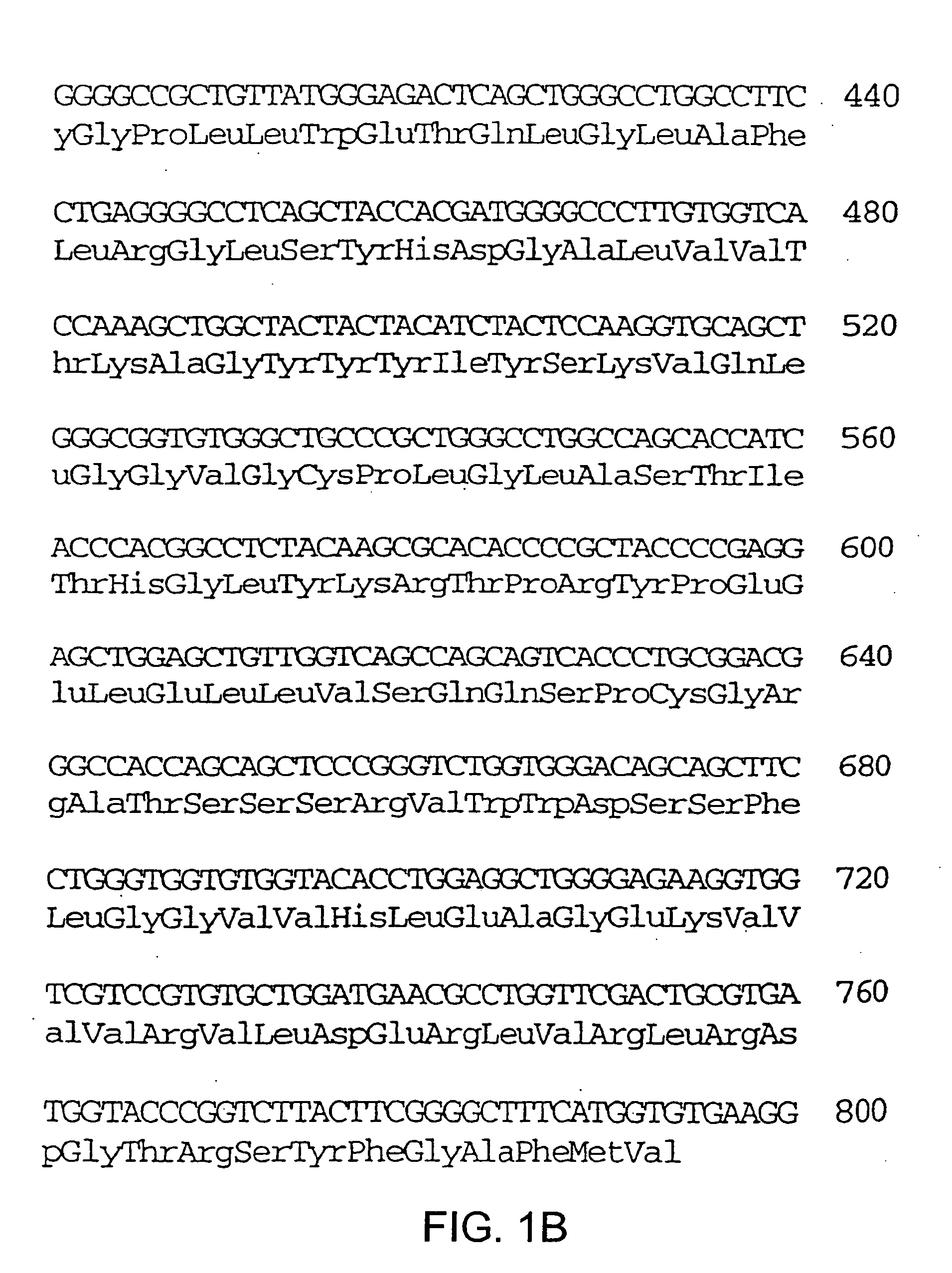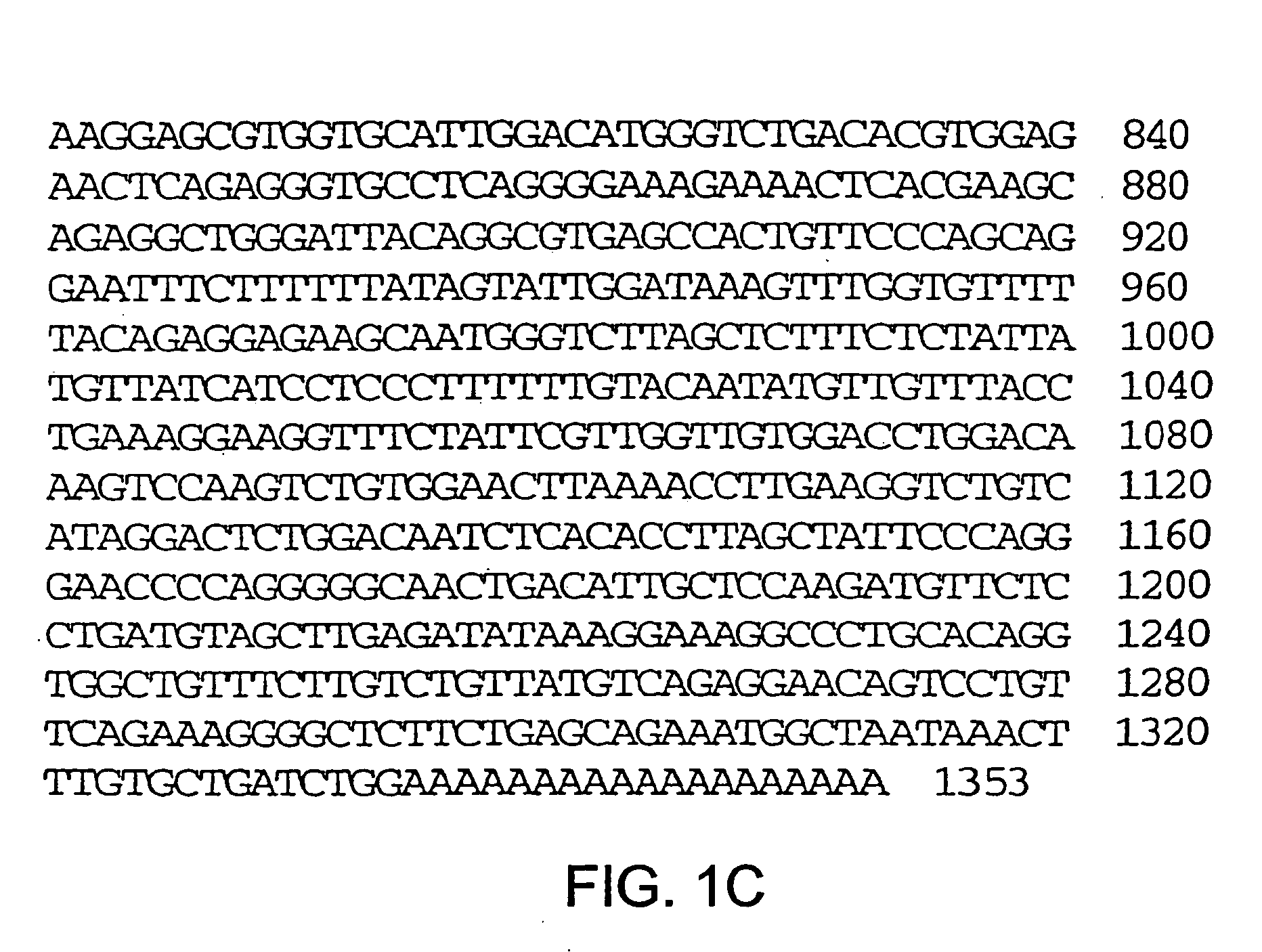Liver function controlling agents
a liver function and controlling agent technology, applied in the direction of depsipeptides, peptide/protein ingredients, fungi, etc., can solve the problems of liver dysfunction, liver cirrhosis, liver cancer, etc., and have been left unattended to date, etc., to achieve the effect of suppressing the expression of dna, and accelerating or inhibiting the activity of the protein
- Summary
- Abstract
- Description
- Claims
- Application Information
AI Technical Summary
Benefits of technology
Problems solved by technology
Method used
Image
Examples
reference example 1
Cloning of cDNA Encoding Human-Derived TL4 Protein
[0505] Cloning of cDNA was carried out using the GENETRAPPER™ cDNA positive selection system (GIBCO BRL). Escherichia coli DH12S strain from the SUPERSCRIPT™ human liver cDNA library (GIBCO BRL) was incubated at 30° C. for 16 hours in Terrific Broth (12 g / l Bacto-tryptone (Difco Co.), 24 g / l Bacto-yeast extract (Difco Co.), 2.3 g / l potassium monophosphate, 12.5 g / l potassium diphosphate, 0.4% glycerol) supplemented with 100 μg / ml of ampicillin. After collecting the cells, plasmid cDNA library was prepared using Qiagen Plasmid Kit (Qiagen, Inc.). The plasmid cDNA library was digested, after purification, with GeneII, ExoIII (both GIBCO BRL) to produce single stranded cDNA library.
[0506] On the other hand, a synthetic oligonucleotide (SEQ ID NO:11) was used as a probe for screening of cDNA library. The probe was labeled through biotinylation at the 3′ end using TdT, biotin-14-dCTP (GIBCO BRL). After treating at 95° C. for a minute, ...
reference example 2
Cloning of cDNA Encoding Mouse-Derived TL4 Protein
[0511] Cloning of cDNA was performed according to the PCR method. Escherichia coli DH12S strain from SUPERSCRIPT™ mouse 8.5 day-embryo-derived cDNA library (GIBCO BRL) was incubated at 30° C. for 16 hours in Terrific Broth (32 g / l Bacto-tryptone (Difco Co.), 20 g / l Bacto-yeast extract (Difco Co.), 0.2 g / l NaCl) supplemented with 100 μg / ml of ampicillin. Then, plasmid cDNA library was prepared using Qiagen Plasmid Kit (Qiagen, Inc.) and employed as a template.
[0512] As primers, the following two synthetic oligonucleotides were employed.
5′-TCTGCTCTGGCATGGAGAGTGTGGT-3′(SEQ ID NO: 14)5′-CTATTGCTGGGTTTGAGGTGAGTC-3′(SEQ ID NO: 15)
[0513] By applying Thermal Cycler (GeneAmp® PCR System 2400, Perkin-Elmer Co.) to the system TaKaRa Ex Taq® (Takara Shuzo Co., Ltd.), PCR was carried out by one cycle set to include 94° C. for a minute, 30 cycles set to include 94° C. for 20 seconds, then 55° C. for 30 seconds and then 72° C. for 2 minutes, a...
reference example 3
Cloning of Chromosomal Gene Containing the Coding Region of Mouse-Derived TL4 Protein Gene
[0523] A chromosomal DNA fragment encoding the region containing the open reading frame of the mouse-derived TL4 protein gene was isolated by the plaque hybridization method using as a probe labeled mouse-derived TL4 protein cDNA, using lambda FIX® II library, into which 129SVJ mouse chromosomal DNA fragment partially digested with Sau2AI had been incorporated. First, Escherichia coli XL1-Blue MRA was incubated in LB medium supplemented with 0.2% maltose and 10 mM MgSO4 at 30° C. overnight. The same volume of the culture was mixed with a phage solution diluted in 1-10×104 pfu (plaque-forming unit) / ml, followed by incubation at 37° C. for 10 minutes. To 200 μl of the solution mixture was added 5 ml of top agarose (NZY medium [5 g / l NaCl, 2 g / l MgSO4.7H2O, 5 g / l yeast extract, 10 g / l NZ amine (pH was adjusted to 7.5)] added with agarose to become 0.7% of agarose), which had been previously warm...
PUM
| Property | Measurement | Unit |
|---|---|---|
| temperature | aaaaa | aaaaa |
| temperature | aaaaa | aaaaa |
| temperature | aaaaa | aaaaa |
Abstract
Description
Claims
Application Information
 Login to View More
Login to View More - R&D
- Intellectual Property
- Life Sciences
- Materials
- Tech Scout
- Unparalleled Data Quality
- Higher Quality Content
- 60% Fewer Hallucinations
Browse by: Latest US Patents, China's latest patents, Technical Efficacy Thesaurus, Application Domain, Technology Topic, Popular Technical Reports.
© 2025 PatSnap. All rights reserved.Legal|Privacy policy|Modern Slavery Act Transparency Statement|Sitemap|About US| Contact US: help@patsnap.com



